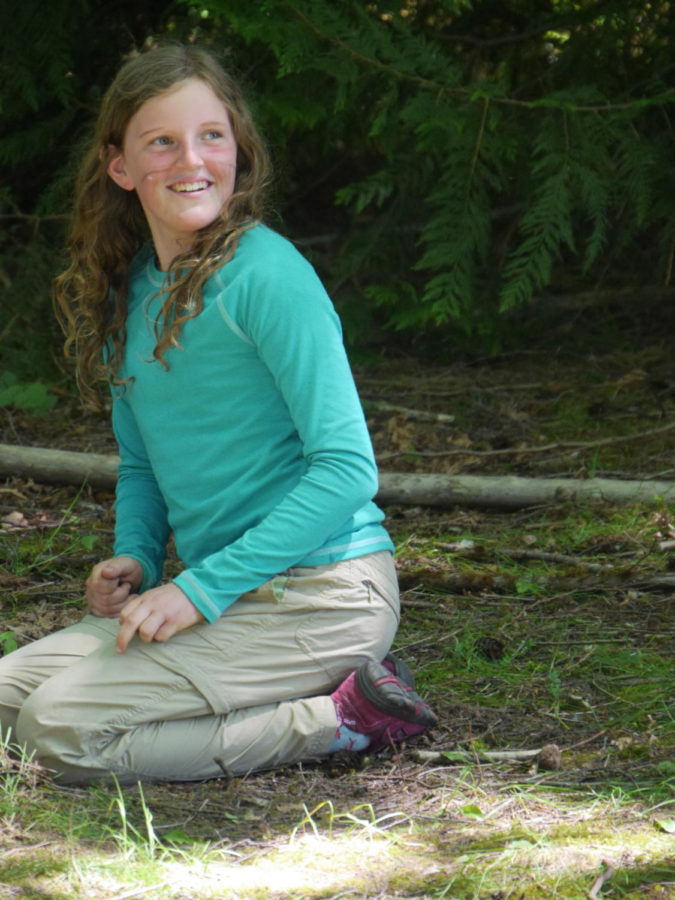From the mixed up files of a Waldorf student
Exploring the oddities of private school life
by Faith
December 7, 2021
Every year, parents of private school kids will pay $10,000 or more for school tuition, with the hope that their children will be getting an education that sets them up to be successful. But are private schools really giving a more rigorous education? And are the ideals that some private schools founded on acceptable? In my experience, no.
I went to Seattle Waldorf School (SWS) through eighth grade, and after leaving I can look back and question everything.
SWS is one of those granola schools full of anti-vaxxers, essential oils, and anti-technology wealthy white people. We had “non traditional” classes like handwork (knitting, sewing, etc.), woodwork, and eurythmy. Google defines eurythmy as, “part of anthroposophic medicine – for claimed therapeutic purposes.” It’s basically a weird type of dance that we had to do for eight years.
Now I can’t speak to every private school kid’s experience. I understand that some private schools can be worth the cost because they can meet a kid’s needs better or maybe be a safe space for their religion. That did not happen for me. I was there because my parents liked the alternative style of education and hands-on approach.
SWS gave me some fun memories and friends, especially the field trips which were a huge privilege. We went to farms, Mt. St. Helens, and even visited Washington, D.C. But Waldorf’s founding ideals are incredibly problematic.
Former Waldorf educator Jennifer Sapio, talked about this in an article she wrote for the “Age of Awareness” website about her years at a Waldorf school.
“What seemed to be valued was not years in the classroom, experience or expertise,
evidence-based teaching practices, collaborative work, or practical professional development, but rather adherence to the philosophies of a White twentieth-century thinker’s spiritual ideology,” she said.
The “White twentieth-century thinker” referred to is Rudolf Steiner, who founded Waldorf schools in 1919. “[Steiner] writes that humans are on an evolutionary journey through reincarnation and that as souls are refined and purified, they move “up” from the African to the Asian and finally to the European races,” Sapio said when talking about the hiring process for Waldorf educators.
One way that racism showed up in the classroom was in third grade when we were told a version of the Tar Baby story. There are many versions of the Tar Baby story that circulate the world. The most popular is a Bre’er rabbit story by Uncle Remus. The version we were told had major problematic elements.
A white baby lives in the jungle with many animals. The baby is well liked and also the protagonist of the story. Then, somehow the baby is dipped in tar and turned black. All the animals begin to hate the now black baby and he becomes the antagonist.
Another aspect of Waldorf that was unfortunate was the lack of an actual education. My mom will tell you that we “learned differently,” but did we learn much at all? Sure I can finger knit and say “soy sauce” in Japanese, but don’t ask me how to make a folder in google drive or add fractions.
Instead of learning U.S. history or Algebra, we were gardening.
We had a class called Open Space, where we were encouraged to talk about current events, drugs, and alcohol. Maybe this was trying to be a spin on a normal health class. But what we ended up doing was listening to our teacher tell us children’s stories.
She would literally sit in front of a bunch of middle schoolers and read folktales.
Whenever we tried to bring up serious issues like racism, drug abuse, or problematic aspects of the school we were either completely shut down by our teacher, or the issue was sugarcoated. I remember a genuine discussion about addiction turning into us talking about being addicted to caffeine. Caffeine is addictive, but there is a huge difference between caffeine and heroin addiction.
We also didn’t have a nurse or school counselor, which meant that if you got injured, the receptionists were in charge of patching you up. And if you had mental health issues you did extra eurythmy before and/or after school.
Extra eurythmy did not help me, and, if anything, it made me want to leave SWS more.
Once during woodwork I almost cut the top of my thumb off with a saw. I went to the office, blood gushing from my hand and was met with a receptionist who started turning green. She called another office worker who attempted to patch up my hand by layering bandaids over the wound (no hate to the office people, they just weren’t medically trained).
Thankfully, my classmate’s dad who works at Seattle Children’s Hospital happened to be in the office that day and was able to patch up my finger, and I did not need stitches.
As someone who experienced all of this strange take on education for eight years, I would encourage parents to think critically about a private school before they send their kid to be immersed in the culture.
It’s really isolating for a kid to feel like they have no one to talk to because there is not a support system in place.
If a school is founded on racism, it will likely still have racist aspects. Make sure that there are adequate resources like counselors and nurses, not more eurythmy. Question a curriculum that was founded on a racial hierarchy and white superiority complex and spiritual beliefs, as opposed to actual learning.




